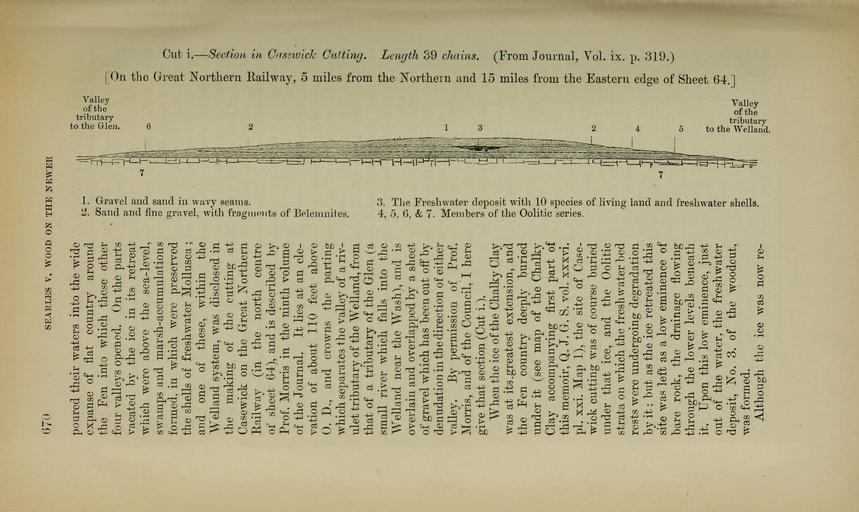MAKE A MEME
View Large Image

| View Original: | The_Quarterly_journal_of_the_Geological_Society_of_London_(13860133753).jpg (2068x1232) | |||
| Download: | Original | Medium | Small | Thumb |
| Courtesy of: | commons.wikimedia.org | More Like This | ||
| Keywords: The Quarterly journal of the Geological Society of London (13860133753).jpg 070 <br> SEAELES V WOOD ON THE NEWER <br> poured their waters into the wide <br> expanse of flat country aronnd <br> the Fen into which these other <br> four valleys opened On the parts <br> vacated by the ice in its retreat <br> which were above the sea-level <br> swamps and marsh-accumulations <br> formed in which were preserved <br> the shells of freshwater Mollusca ; <br> and one of these within the <br> Well and system was disclosed in <br> the making of the cutting at <br> Casewick on the Great Northern <br> Railway in the north centre <br> of sheet 64 and is described by <br> Prof Morris in the ninth volume <br> of the Journal It lies at an ele- <br> vation of about 110 feet above <br> 0 D and crowns the parting <br> which separates the vallej' of a riv- <br> ulet tributary of the Welland from <br> that of a tributary of the Glen a <br> small river which falls into the <br> Welland near the AVash and is <br> overlain and overlapped by a sheet <br> of gravel which has been cut off by <br> denudation in the direction of either <br> valley By permission of Prof <br> Morris and of the Council I here <br> give that section Cut i <br> When the ice of the Chalky Clay <br> was at its greatest extension and <br> the Pen country deeply buried <br> under it see map of the Chalky <br> Clay accompanying first part of <br> this memoir Q J G S vol xxxvi <br> pi xxi Map 1 the site of Case- <br> wick cutting was of course buried <br> under that ice and the Oolitic <br> strata on which the fresh water bed <br> rests were undergoing degradation <br> by it ; but as the ice retreated this <br> site was left as a low eminence of <br> bare rock the drainage flowing <br> through the lower levels beneath <br> it Upon this low eminence just <br> out of the water the freshwater <br> deposit No 3 of the woodcut <br> was formed <br> Although the ice was now re- <br> 020 <br> 3 p <br> °2 Pj <br> bd <br> P CD <br> c EL <br> CD <br> oB <br> o ~ <br> I <br> o <br> Oi <br> c <br> CD <br> Q <br> g <br> r - <br> Q <br> cT <br> cc <br> Ha <br> M <br> <br> C <br> «Q <br> B <br> r-t- <br> H <br> CD <br> f\ <br> c <br> CD <br> CO <br> CO <br> B I <br> cd a 36936507 113692 51125 Page 670 Text 38 http //www biodiversitylibrary org/page/36936507 1882 Geological Society of London NameFound Mollusca NameConfirmed Mollusca EOLID 2195 NameBankID 230454 Biodiversity Heritage Library The Quarterly journal of the Geological Society of London v 38 1882 Geology Periodicals Smithsonian Libraries bhl page 36936507 dc identifier http //biodiversitylibrary org/page/36936507 smithsonian libraries Information field Flickr posted date ISOdate 2014-04-15 Check categories 2015 August 26 CC-BY-2 0 BioDivLibrary https //flickr com/photos/61021753 N02/13860133753 2015-08-26 07 53 30 cc-by-2 0 PD-old-70-1923 The Quarterly journal of the Geological Society of London 1882 Photos uploaded from Flickr by Fæ using a script | ||||